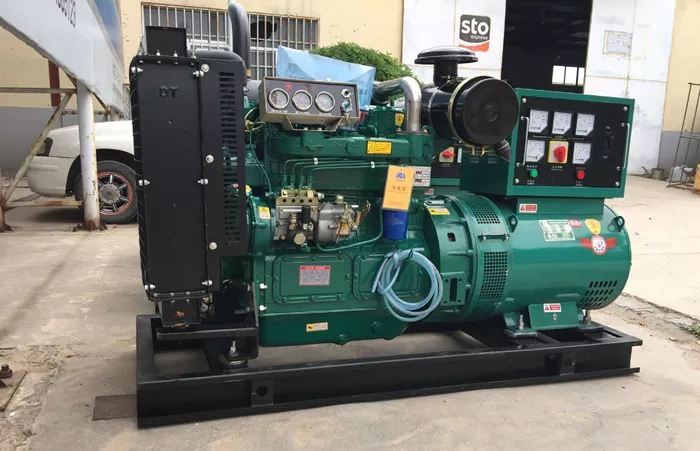Refueling a diesel generator while it is running involves several critical considerations, including safety, operational efficiency, and best practices. This article provides an in-depth analysis of the feasibility of refueling diesel generators during operation, highlighting associated risks, safety measures, and effective practices to ensure both safe and efficient generator management.
1. Understanding Diesel Generators and Refueling Requirements
1.1 Diesel Generator Basics
Diesel generators are essential for providing reliable power across various applications. They operate on diesel fuel, which is stored in a fuel tank and consumed during operation. The generator’s engine converts fuel into mechanical energy, which drives an alternator to generate electricity.
1.2 Refueling Needs
Proper refueling ensures that the generator has a continuous supply of fuel to avoid interruptions in power delivery. Refueling involves transferring diesel fuel from a storage tank to the generator’s fuel tank. Managing this process carefully is crucial to maintain safety and avoid operational disruptions.
2. Safety Risks of Refueling While the Generator Is Running
2.1 Fire and Explosion Risks
Refueling a running diesel generator introduces several risks:
Fire Hazard: Diesel fuel is highly flammable. Any spillage or exposure to hot surfaces can lead to a fire. Generators have hot components that could ignite spilled fuel.
Explosion Risk: Accumulation of fuel vapors in the engine compartment or surrounding area can result in an explosion. This risk is higher if there are electrical components or sparks in the vicinity.
2.2 Manufacturer’s Guidelines
Most diesel generator manufacturers advise against refueling while the generator is running. These guidelines are based on safety considerations and extensive testing. Always consult the generator’s user manual or manufacturer’s recommendations for specific refueling procedures.
2.3 Design Considerations
Safety Features: Modern generators may have advanced safety features designed to mitigate refueling risks. These features can include automated shut-off systems and improved vapor management.
Engine and Tank Design: The design of the engine and fuel tank impacts the safety of refueling operations. Generators with enclosed tanks and efficient vapor management systems may handle refueling better than older models.
3. Best Practices for Refueling Diesel Generators
3.1 Standard Refueling Procedures
To ensure safety, follow these best practices:
Turn Off the Generator: Always turn off the generator before refueling to eliminate the risk of fire and explosion.
Use Approved Equipment: Utilize refueling equipment designed for diesel fuel. Ensure that all containers and hoses are in good condition and free from leaks.
Avoid Spills: Carefully manage the refueling process to prevent spills. Use spill containment measures to address any accidental releases of fuel.
3.2 Emergency Refueling Procedures
In emergencies where refueling while the generator is running is unavoidable:
Implement Safety Measures: Ensure that fire extinguishers and spill containment kits are available.
Refuel Slowly: If necessary, refuel very slowly to minimize the risk of spills and accidents.
Trained Personnel: Only trained and experienced personnel should handle refueling under such conditions. They should be familiar with emergency response procedures.
3.3 Fuel Management and Planning
Effective fuel management can help reduce the need for refueling during operation:
Monitor Fuel Levels: Regularly check fuel levels and schedule refueling during periods of low demand or downtime.
Install Fuel Management Systems: Automated systems can help monitor fuel levels and schedule refueling, reducing the risk of running out of fuel and minimizing the need for refueling while the generator is running.
4. Case Studies and Practical Examples
4.1 Industrial Settings
In industrial environments where continuous power is crucial:
Large Fuel Tanks: Many industrial generators are equipped with large fuel tanks or additional storage to extend runtime, reducing the need for frequent refueling.
Automated Systems: Advanced fuel management systems are used to ensure safe and efficient refueling without disrupting operations.
4.2 Emergency Backup Systems
Emergency backup generators often include protocols to manage refueling efficiently:
Scheduled Refueling: Backup systems are designed for scheduled refueling during non-operational periods to avoid refueling while running.
Enhanced Safety Protocols: These systems include additional safety measures to manage refueling operations and minimize risks.
see also: What Is the Working Principle of Diesel Generator
4.3 Military and Remote Operations
In military or remote locations where generators are critical:
Specialized Procedures: Refueling procedures are adapted to address the unique challenges of these environments, including additional safety protocols and contingency plans.
Extended Fuel Storage: These setups often include extended fuel storage solutions to minimize the frequency of refueling and associated risks.
Conclusion
Refueling a diesel generator while it is running is generally not recommended due to significant safety risks. The standard procedure is to turn off the generator before refueling to ensure safety and operational efficiency. Adhering to manufacturer guidelines, implementing best practices, and employing effective fuel management strategies are essential for maintaining safety and reliability.
By understanding the risks and following proper procedures, users can ensure safe and effective operation of their diesel generators. Proper planning and adherence to safety protocols help mitigate risks and extend the lifespan of the generator while maintaining a continuous power supply.
Related topics:
- Air Quality Concerns Raised at Harbourside Event Space Due to Diesel Generator Use
- Diesel or Gas Generator: Which Is Better
- How Efficient Are Diesel Generators?

